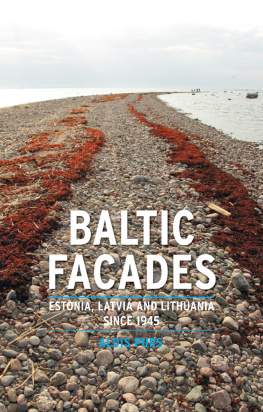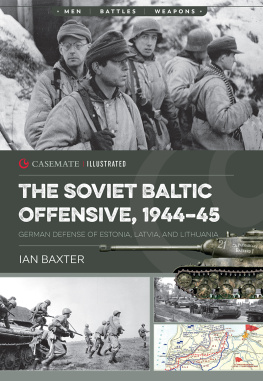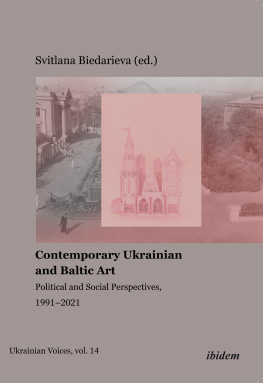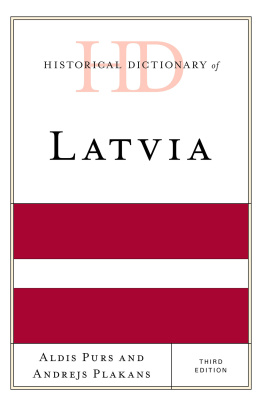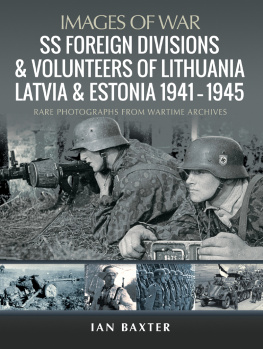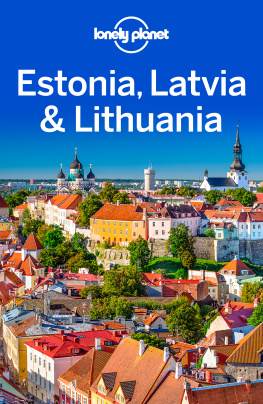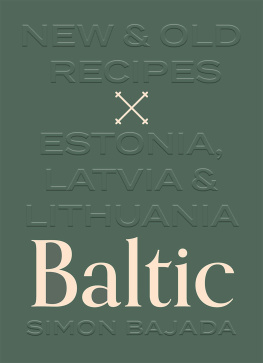CONTEMPORARY WORLDS explores the present and recent past. Books in the series take a distinctive theme, geo-political entity or cultural group and explore their developments over a period ranging usually over the last fifty years. The impact of current events and developments are accounted for by rapid but clear interpretation in order to unveil the cultural, political, religious and technological forces that are reshaping todays worlds.
No part of this publication may be reproduced, stored in a retrieval system, or transmitted,
in any form or by any means, electronic, mechanical, photocopying, recording or otherwise,
without the prior permission of the publishers.
Baltic facades : Estonia, Latvia and Lithuania since 1945. (Contemporary worlds)
1. Estonia History 19401991.
2. Estonia History 1991
3. Latvia History 19401991.
4. Latvia History 1991
5. Lithuania History 19451991.
6. Lithuania History 1991
7. Estonia Social conditions. 8. Latvia Social conditions.
9. Lithuania Social conditions 19451991.
10. Lithuania Social conditions 1991
I. Title II. Series
947.9-dc23
Preface
This book is intended as a thought-provoking, detailed introduction to Estonia, Latvia and Lithuania for those that were once pejoratively called the chattering classes, and is not aimed specifically at the professional historians, political scientists, economists and Baltic specialists in their midst. This book is meant primarily for the bankers, architects, librarians, lawyers, doctors, teachers, clerks, accountants, brand managers and those of a thousand more trades and professions who are interested in the world beyond their block, city, region or state; for those that approach the world with a healthy intellectual curiosity, but are unable or unwilling to commit a great deal of time, energy and resources to exhaustive, in-depth studies. This book is meant for the curious traveller, for example, who is considering or planning a trip to the region and wants to know more than is in a tourist pamphlet; and for the concerned citizen who hears about political and economic events in contemporary Estonia, Latvia and Lithuania, and yearns for more context than newspapers or, more likely, television segments provide.
Since the book is not intended for academic specialists, I have foregone traditional academic footnoting and referencing. I have opted for endnotes as cues to suggested reading instead of providing laundry lists of such sources at the end of chapters. The books and articles cited may not even agree with the points that I make. Instead they are meant as a starting point for examining any given topic in more detail. For example, I mention Lithuanians and their national and social identity in the later nineteenth and early twentieth century only briefly. I suggest, however, that if the reader finds this an area of particular interest they turn to Tomas Balkeliss The Making of Modern Lithuania. This source, of course, is not theonly one to address the topic, but it is a good place to begin, and from it an eager reader can find other sources. Further, I have only referenced sources in the English language. This is unfair to the bulk of academic work on Estonia, Latvia and Lithuania, which is primarily in Estonian, Latvian and Lithuanian as well as in German, Russian and a smattering of other languages. Nevertheless, the English source base is impressive, and it seems convincing to me that most of the readers for whom this book is intended will remain within it.
Even still, this book may fail the reader for whom it is intended, and if that is the case, the blame lies solely with me. I have tried to weave a kind of narrative that holds up to however the reader will experience Estonia, Latvia and Lithuania. If months later the reader notices a news piece on the fervour of Latvian hockey fans, they may understand the hysteria from some of the context provided in this book. Ultimately, I hope that this book provides its readers with a sense of Estonia, Latvia and Lithuania.
Introduction
Who the f*** are the Balts to us?
To imagine the slightly portly, perennially bow-tied Toomas Hendrik Ilves, graduate of Columbia University and the University of Pennsylvania, being upset about being labelled a Balt underscores how fundamentally flawed and incomplete Baltic identity is. Ilvess life story has crisscrossed continents, professions and citizenships. Born in Sweden to Estonian refugees of the Soviet occupation of their homeland, he spent his formative years in the United States, where he excelled academically and received degrees in psychology from two of the most esteemed universities in the USA. He worked as a journalist for Radio Free Europe in the 1980s, using the position to vault himself into Estonias politics prior to independence. After renouncing his US citizenship in favour of his Estonian (by virtue of his parents pre-Second World War status), he moved through the ranks of the Ministry of Foreign Affairs, serving as ambassador to his former home, the USA, going into parliament, and later becoming Minister of Foreign Affairs from December 1996 until September 1998. In 2003 Ilves became a member of the European Parliament and by the autumn of 2006 was elected president of the Republic of Estonia by Estonias parliament, the Riigikogu. Ilvess pedigree as a leading scion of the Estonian migr community, and as a steadfast opponent to the Soviet occupation of Estonia (and its repercussions), would suggest that he, together with like-minded Latvians and Lithuanians, would nourish a Baltic common cause. Instead his attacks on the core of the Baltic idea, developed while he was Minister of Foreign Affairs, have become the most celebrated and withering critiques of the entire concept.
Ilvess rejection of the Baltic label was most thoroughly developed in a speech to the Swedish Institute for International Affairs on 14 December 1999. In many respects Ilvess speech was a modern incarnation of Jonathan Swifts

